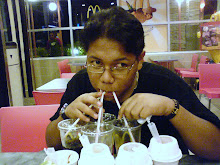memang sekali dgr tak der rasa pelik. tp bile di sebut umur 18thn tu y jadi pelik..umur 18thn tp size kasut 2.huahuahuaua.
benda ni terjadi kt adik saudara aku dah 18 thn size kasut 2.hehehehe...
bedan besau tp kaki kecik..heehehehe...

“Laki-laki yang mencuri dan perempuan yang mencuri, potonglah tangan keduanya (sebagai) pembalasan bagi apa yang mereka kerjakan dan sebagai siksaan dari Allah. dan Allah Maha Perkasa lagi Maha Bijaksana.” ( Al-Maidah : 38)

Weld defects definition.
They are excessive conditions, outside the acceptance limits, which risks the compromise the stability or the functionality of the welded structure. They are also called reject able discontinuities. This continuity reject able must be determines by correct action to avoid future effects. Usually the professional should be determines the defects are repair able or not.
Cold lap
This defect can be happen because the filler metal does not fully molten to the groove or root face. It is because the welder not enough excellent in controlled the weld holder when during their work or the welder not using the correct voltage. In radiography testing we can see this defect at the dark part where the molding not fusing with the base metal.
Porosity
Porosity can divide by two categories, cluster porosity and gas porosity or blow hole but both of the defects in the same condition where the shielding gas entrapped into the molding. It can be find in form rows or cluster.
Cluster porosity
When the shielding gas can’t escape from the mould because may be the welding electrode not covered from oxygen. Usually cluster porosity can be found at the end of weld in group.
Gas porosity and blow hole
Gas porosity is the similar meaning where the gas or air can’t move out in the molten and will be come trapped when the molten change to solid. Blows holes, it is because by the sand with low permeability so the gas cannot be escaped. Another cause can be attributes to green ladles, rusty or dumb chill and chaplets.
Tungsten Inclusion
Tungsten inclusion it cause by the trapped tungsten into the molding. When during welding the tungsten touch the metal so the tungsten will be fuse at the base metal or molten. In radiography we can see the fuse tungsten in light color because tungsten had more density than aluminum or steel.
Slag inclusion
Slag inclusion it causes by solid material trapped into the molding. May be this defects become from careless. Before the welder start their work, the base metal must be clean example brushing the base metal or remove the slag from molding.
Incomplete penetration
Incomplete penetration or lack of penetration defect it causes by the failure weld metal can’t penetrate the joint. Maybe the voltage are using not applicable for the penetration.
External Undercut
The reduction on plate surface, together with the concentration of stress at the toe due to the sharp corner, may cause failure of the welded joint. It is caused by high welding current, welding speed too slow, or poor handling of torch.
Internal Undercut
The reduction on root plate, together with the concentration of stress at the toe due to the sharp corner, may cause failure of the welded joint. It is caused by high welding current, welding speed too slow, or poor handling of torch.
Inadequate reinforcement
The both side of the weld joint will be suck down below the surface and the center of the weld bead will be rise level or over the surface. It is because uncorrected current voltage and fail to handling the torch the weld molding less than the thickness base metal. We can see the darker on the weld when using radiography testing.
Excess reinforcement
Reinforcement means the weld bead is over then height are acceptable or too many metals are added to the joint so the bead not shaped correctly. It is because the travel it too slow and the current voltage too low. Usually we can find this defect at start and stop weld.
Misalignment
The plate is misalignment on perpendicular axis the weld or the plate not level. In pipe, the pipe is mismatch on radial direction. It is because the welder or the fabricator unprepared before or during tag weld didn’t use clamp when during weld it can be effect the alignment too.
Arc strike
Arc strike mean, the incident before welding or during welding or after welding it cause by the ground clamps it to close on the work piece or the electrode of electrode holders contacting on the weld location or base metal.
Overlap.
Poor fusion at the toe on the weld joints or the handling of torch is not Constance able or the bead joint out from weld lines.
Cracks
The continuity will become crack is because the inclination of stress on the certain level. It is starting point for the failure on the structures and components. Cracks act as concentrators and are not acceptable for ship hull welds regardless of their size. Their must be repair immediately. There are type of cracks weld metal cracks, under bead cracks, root cracks, root surface cracks, root cracks, weld interface cracks, heat effects zone cracks and toe cracks.